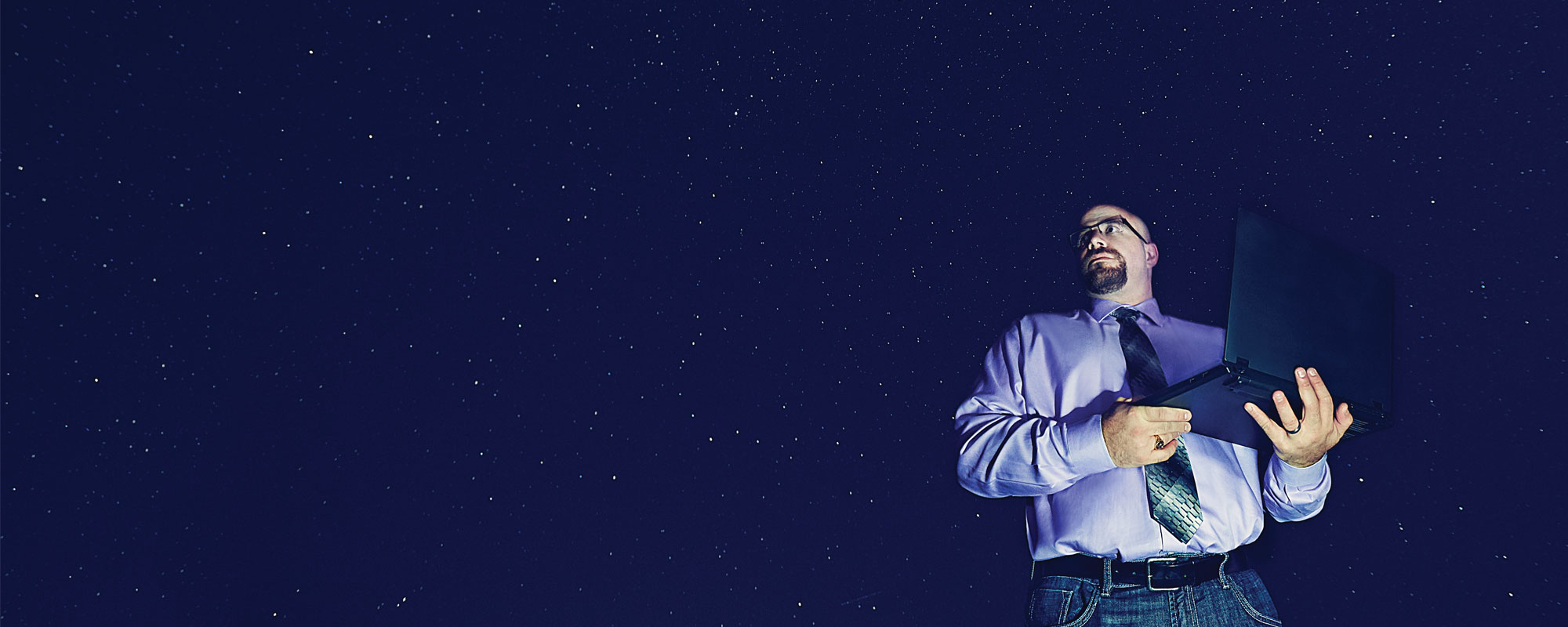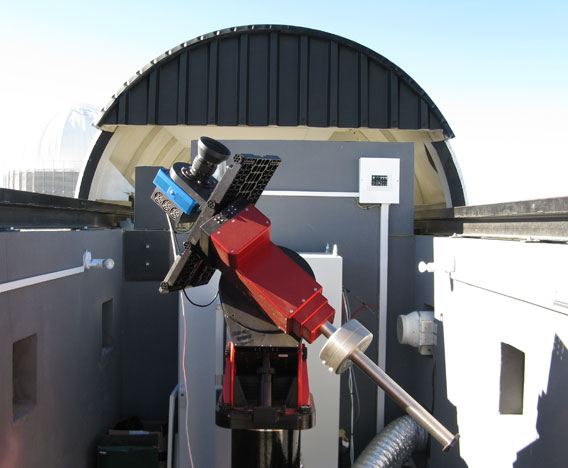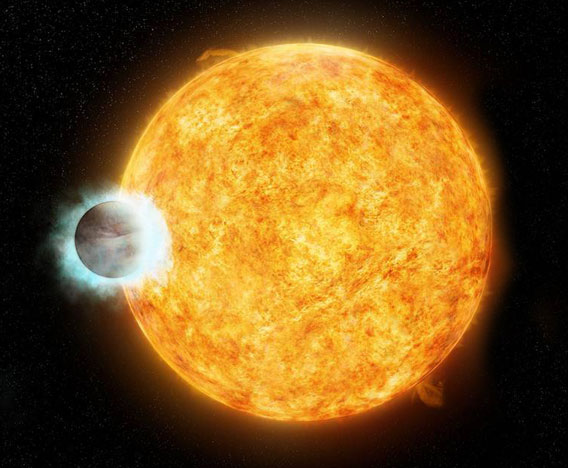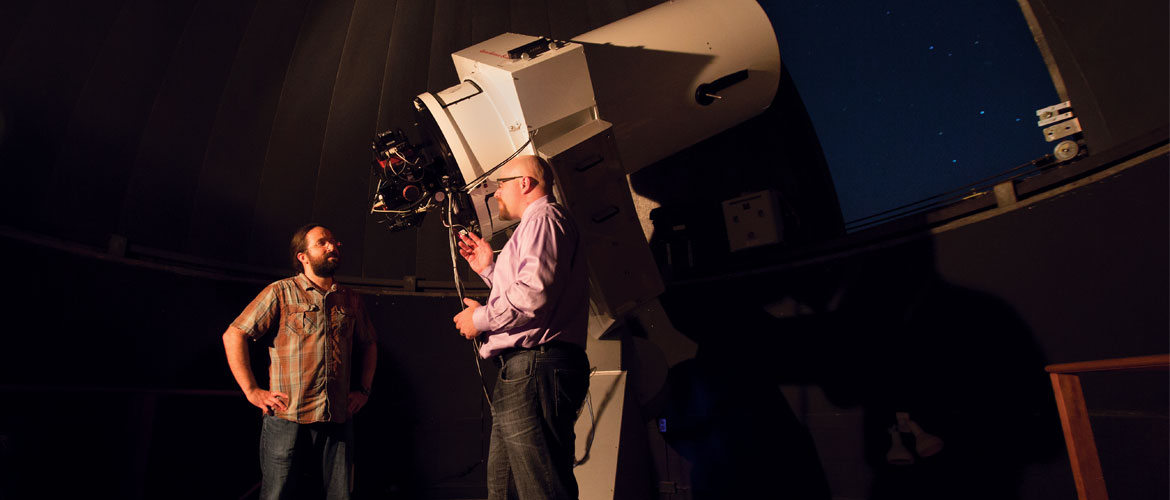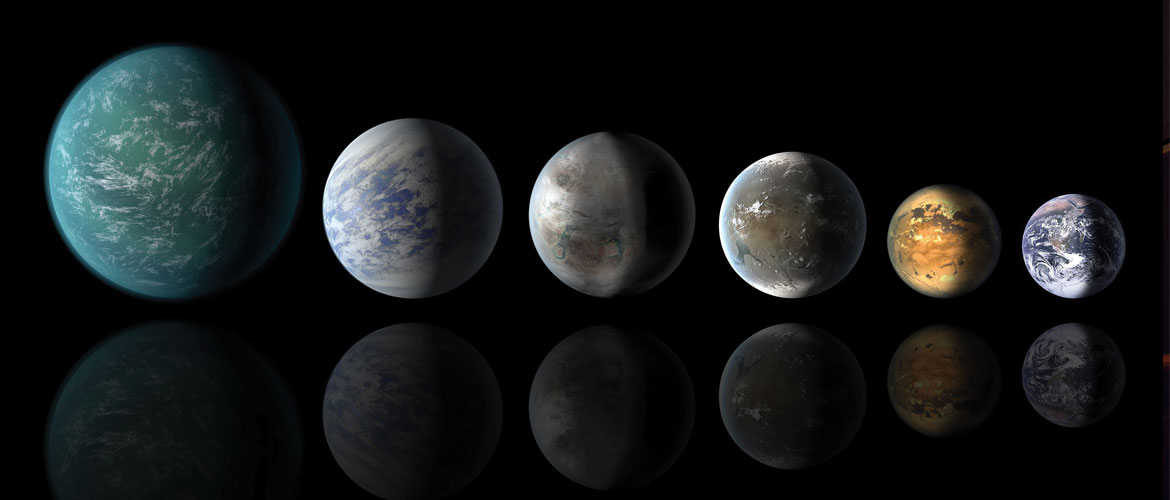Scientists have not yet developed spectroscopy technology that can disentangle the photons from the unfiltered and filtered light streams in this scenario, says Pepper.
In the meantime, the KELT team is continuing the quest for hot Jupiters on which scientists can hone their techniques for analyzing exoplanetary atmospheres.
“The goal of KELT is to discover planets that are good test beds for the techniques that will eventually be used to probe habitable planets,” says Pepper.
“We’re finding a lot of cool things. Scientists have measured properties for 10 exoplanets and have found carbon dioxide, sodium, water and hydrogen, all of which we expect to find in the atmospheres of giant planets.
The KELT Follow-Up Network
On most clear nights, Phillip Reed and his students head to the Kutztown University Observatory to search for exoplanets. Reed, who joined the KELT Follow-Up Network in 2013, earned a Ph.D. in physics from Lehigh in 2008 and is now associate professor of physics and astronomy at Kutztown.
Arriving at the observatory, Reed and his students check KELT’s online transit finder. The secure website lists five or six candidate stars with information about each star’s brightness and the expected magnitude of a possible exoplanet transit.
The 24-inch Kutztown telescope is valued by the KELT researchers, says Reed, because it contains a sophisticated photometer that can detect an exoplanet while it transits its host star and blocks its light.
“KELT comes up with candidate stars that appear to have something transiting them,” says Reed. “We vet these candidates to see if there is a transit when KELT expects there would be one. We look individually at all nearby stars, because if one of them is a binary, it can cause an eclipse of the candidate star, which is the most typical false positive that we see.”
A CCD camera inside the Kutztown telescope takes digital images of the candidate stars and transmits them to a computer that displays them as a series of photos. Reed writes computer programs that convert the images to data, charting the star’s brightness versus transit time on an x-y graph.
An exoplanetary transit lasts 2 to 5 hours and has five stages—pre-transit, ingress, transit, egress and post-transit. If the Kutztown astronomers are lucky, their nighttime shift will span all five stages and they will collect data showing the star’s brightness during each stage as well as baseline data for brightness before and after a transit. Most of the time, however, a transit will begin before darkness or end after daybreak, allowing the astronomers to record only part of the event.
The Kutztown telescope helps determine the size of an exoplanet. When Reed’s group gets a positive reading, other members of the Follow-Up Network conduct spectroscopic studies to determine the planet’s mass. When size and mass are appropriate, the group can confirm the existence of a new exoplanet. Because of the variety of contributions required, says Reed, KELT researchers use the term co-discovery rather than discovery when announcing new planets.
“No one individual,” he says, “can do this alone.”
Fifteen Kutztown students have taken part in KELT’s research in the past three years, says Reed. One has been listed as a coauthor on a published paper; Reed himself has coauthored several. Thanks to KELT, Reed and a fellow astronomer at Westminster College in Pennsylvania have secured a grant through the National Science Foundation’s International Research Experiences for Students program. Four Kutztown students will spend next summer at the Salerno University Observatory in Italy.
KELT’s Citizen Scientists
As he seeks to shed light on one of the mysteries of the universe, Josh Pepper passes his work days in an ordinary setting—seated at a computer writing programming code to analyze streams of data.
“I’m a data physicist,” Pepper says. “Using a telescope has never been a big thrill for me.
I spend almost all of my time at the computer. I use a Unix-Linux interface, which is standard for scientists. If you’re an academic astronomer today, you spend one-third of your career learning to do programming. You’re working on a computer and writing code—hundreds and thousands of lines of code.”


